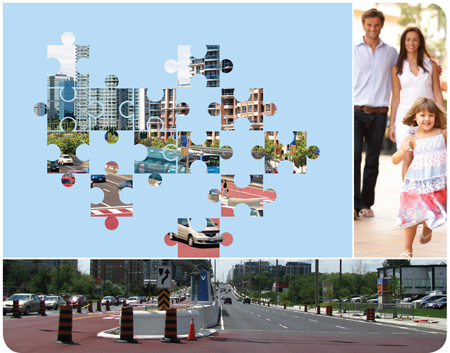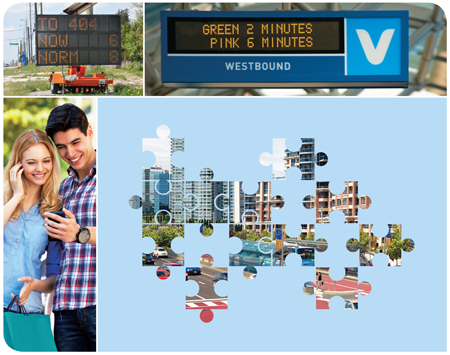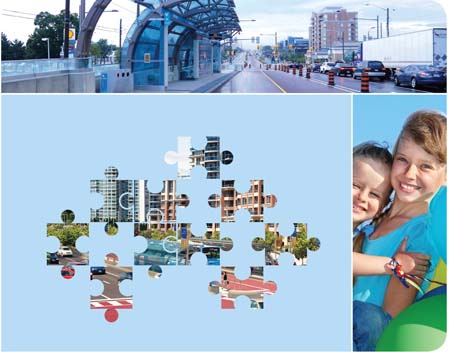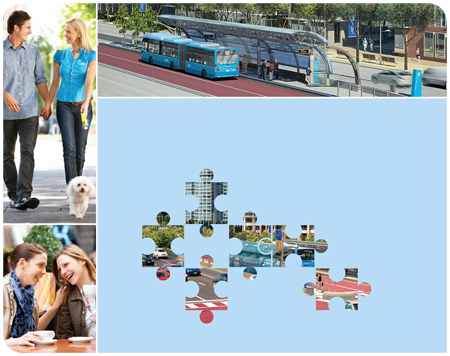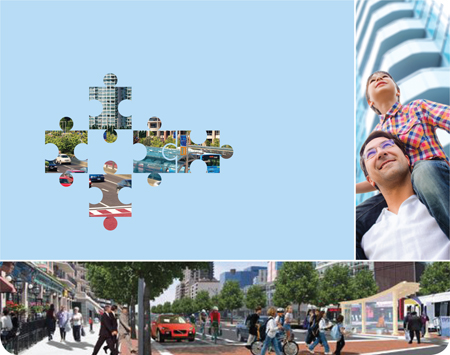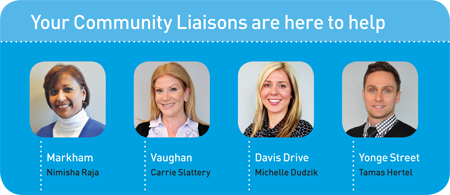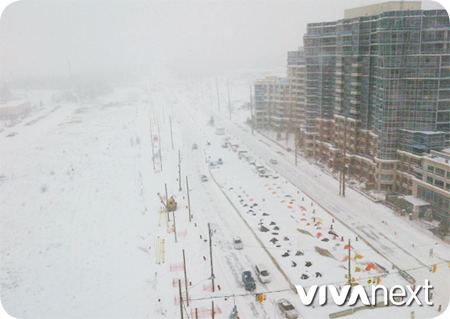We’re excited about the transformation of York Region’s major corridors from busy highways to complete streets designed to be shared by transit-users, pedestrians, cyclists and drivers. But first and foremost, vivaNext is about building a true rapid transit system. Because they’re not going through mixed traffic, these dedicated rapidways will help viva vehicles move past congested stretches of Highway. But the bus rapid transit system will also use a number of other technologies or “transit priority measures” to put the rapid into the system. Here’s the rundown on how we’re going to help keep viva buses reliably rapid.
The first main component is that all buses will have GPS systems installed, which will constantly calculate the vehicle’s speed, heading, latitude and longitude. That way, the transit system will know exactly where each vehicle is, relative to where the schedule says it should be.
The next main component is the traffic signal control system that governs all the intersections along the rapidway route. The system relies on the findings of sophisticated traffic analysis that has worked out the optimal timing for each intersection to ensure the most efficient use of the corridor. This analysis takes into account long-term traffic data reflecting all the users of each intersection, including east/west traffic, north/south traffic, pedestrians and cars making left turns.
Using this analysis, each traffic signal is pre-programmed for the optimal phasing, including how long a green light should last going in each direction.
With real-time information available about where each vehicle is, the transit system will constantly calculate whether a viva vehicle approaching an intersection is on time, or delayed. If the vehicle is behind schedule, a signal sent from the bus to the traffic signal at that intersection will temporarily adjust the phasing so that the vehicle doesn’t have to stop.
The last major component of this complex system is the one that tells our customers when the next bus will arrive at the station. The variable message signs (VMS) installed at each station display real-time arrival information showing the arrival times for all buses expected within the next while, based on the information sent by the vehicle’s on-board GPS system. These message boards are a feature of the viva system that customers really appreciate.
Using this multi-layered approach, we’ll be able to help each viva bus move along quickly, and you’ll be able to know how soon it will arrive. All of which adds up to rapid transit!

